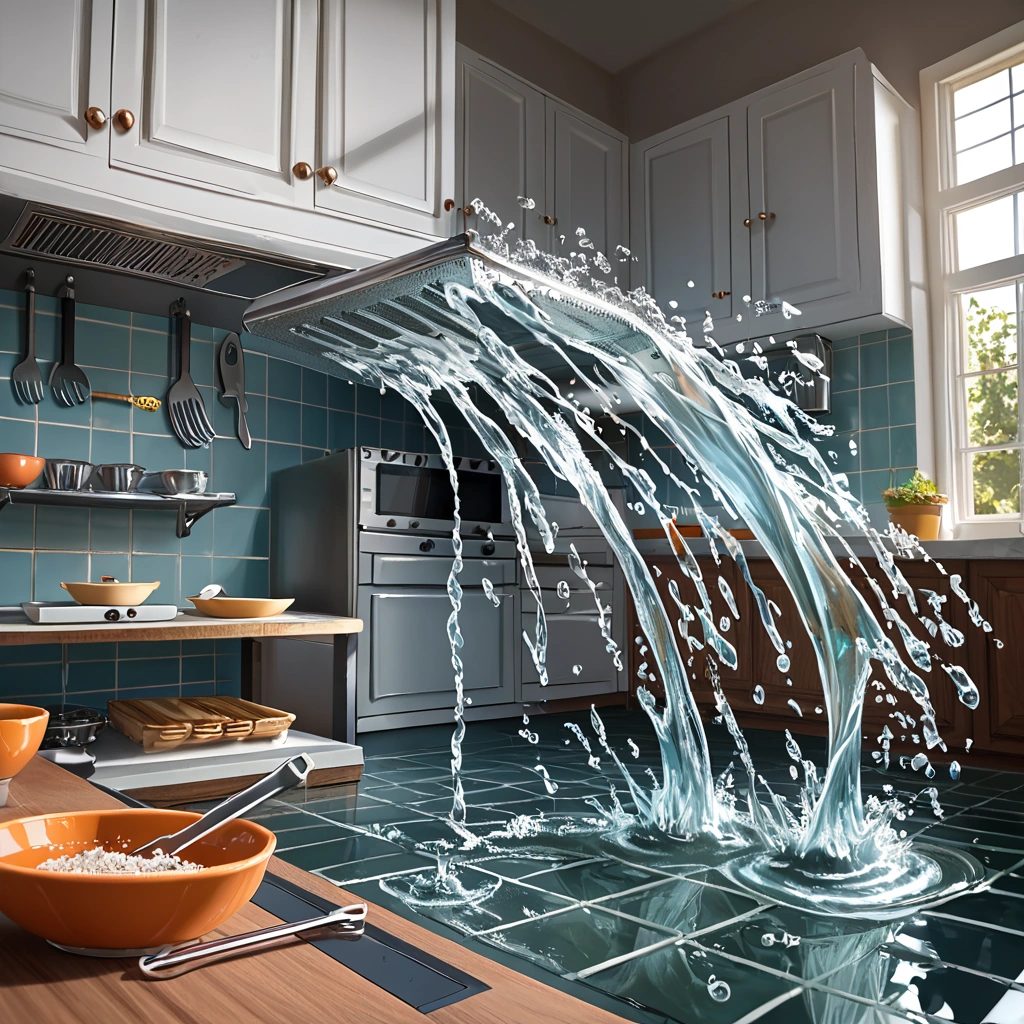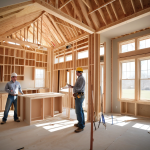Sustainable Kitchen Remodel 2030: A Step-by-Step Guide
A Greener Kitchen for the 2030s: Remodeling with Purpose
The kitchen, often the heart of the home, is ripe for a sustainability makeover. As we approach the 2030s, the urgency to reduce our environmental footprint intensifies. A kitchen remodel presents a golden opportunity to embrace eco-conscious choices, transforming a space of culinary creation into a bastion of environmental responsibility. This isn’t just about aesthetics; it’s about aligning our living spaces with a future where sustainability is paramount. Just as PhonePe’s Indus Appstore seeks to offer developers an alternative to established platforms, homeowners are seeking alternatives to traditional, environmentally damaging renovation practices.
The next decade demands a shift towards mindful consumption and resource management, starting with the very spaces we inhabit. Embracing a sustainable kitchen remodel requires a holistic approach, considering everything from energy-efficient appliances to the very materials that comprise the space. Experts in eco-friendly kitchen design emphasize the importance of lifecycle assessments, evaluating the environmental impact of each component from production to disposal. For instance, choosing reclaimed materials not only reduces demand for new resources but also adds a unique character and story to the kitchen.
Similarly, investing in smart home technology, such as intelligent lighting and water monitoring systems, can further minimize environmental impact and optimize resource consumption, paving the way for a truly green kitchen. The pursuit of a sustainable home renovation also extends to the often-overlooked realm of indoor air quality. Traditional kitchen renovations frequently involve materials laden with volatile organic compounds (VOCs), which can off-gas for years, impacting the health of occupants. Opting for low-VOC finishes, natural countertops, and proper ventilation systems is crucial for creating a healthy and sustainable living environment.
Furthermore, the principles of responsible waste disposal during the kitchen renovation 2030s era dictate a commitment to deconstruction over demolition, allowing for the salvage and reuse of valuable materials. This mindful approach minimizes landfill waste and promotes a circular economy within the construction industry. Looking ahead, the integration of smart home technology will play an increasingly vital role in achieving a truly sustainable kitchen. Imagine refrigerators that optimize energy consumption based on usage patterns, or water filtration systems that minimize waste by precisely dispensing the required amount. Moreover, advancements in material science are yielding innovative, eco-friendly alternatives to traditional building materials. From countertops made from recycled glass to cabinetry crafted from sustainably harvested bamboo, the possibilities for creating a beautiful and environmentally responsible kitchen are expanding rapidly. A commitment to these principles ensures that a sustainable kitchen remodel is not just a trend, but a lasting investment in a healthier planet.
Energy and Water Efficiency: The Foundation of a Sustainable Kitchen
The first step in any *sustainable kitchen remodel* is a comprehensive audit of your existing space. What works functionally? What clashes aesthetically? More importantly, what systems are inefficient? Old appliances are notorious energy hogs, often consuming far more power and water than their modern counterparts. Consider replacing them with *Energy Star*-certified models. These appliances, from refrigerators to dishwashers and even ovens, use significantly less energy and water, reducing your utility bills and environmental impact. Look for models with smart features that optimize energy consumption based on usage patterns.
For example, refrigerators with adaptive defrost cycles that only activate when needed, or dishwashers with soil sensors that adjust water usage based on the load’s cleanliness. According to the EPA, replacing old appliances with *Energy Star* certified models can save homeowners hundreds of dollars per year and significantly reduce greenhouse gas emissions. Water-saving fixtures are equally crucial in an *eco-friendly kitchen design*. Low-flow faucets and showerheads (if your kitchen includes one) can dramatically reduce water consumption without sacrificing performance.
Aerators can be easily installed on existing faucets to further enhance water efficiency, reducing flow rates to as little as 1.5 gallons per minute. “Water conservation is no longer a luxury, but a necessity,” says Sarah Johnson, a sustainable design consultant. “Investing in water-efficient fixtures is a simple yet powerful way to reduce your environmental footprint and save money in the long run.” Remember, every drop saved contributes to a more sustainable future, especially as we look towards the resource challenges of the *kitchen renovation 2030s*.
Beyond appliances and fixtures, consider the often-overlooked aspects of *green kitchen* energy consumption. Lighting accounts for a significant portion of a kitchen’s energy use. Switching to LED lighting is a straightforward way to reduce energy consumption and extend bulb lifespan. Smart lighting systems offer even greater control, allowing you to dim lights, set schedules, and even control lighting remotely. Furthermore, ensure your kitchen is properly insulated. Adequate insulation in walls and ceilings can prevent heat loss in the winter and heat gain in the summer, reducing the strain on your heating and cooling systems. Addressing these fundamental aspects of energy and water efficiency lays a solid foundation for a truly *sustainable home renovation*.
Material Matters: Reclaimed, Recycled, and Responsibly Sourced
Material selection is where sustainability truly shines. Reclaimed materials offer a unique blend of character and environmental responsibility. Think reclaimed wood for cabinetry, flooring, or countertops. Salvaged brick or stone can add a rustic charm while diverting materials from landfills. When new materials are necessary, prioritize those with low environmental impact. Bamboo is a rapidly renewable resource ideal for flooring or cabinetry. Recycled glass countertops are another stylish and sustainable option. Consider the entire lifecycle of the materials you choose, from sourcing to disposal.
Opt for locally sourced materials to reduce transportation emissions and support local economies. Just as fund managers at Fidelity are strategizing around China’s stimulus plans, homeowners need to strategically plan material sourcing for their kitchen renovations. Delving deeper into eco-friendly kitchen design, the concept of embodied energy becomes crucial. Embodied energy refers to the total energy required to extract, process, manufacture, and transport a material. Materials like concrete and aluminum have high embodied energy, while reclaimed wood and locally sourced stone have significantly lower footprints.
When planning a sustainable kitchen remodel, research the embodied energy of different materials to make informed choices. Consider using life cycle assessment (LCA) tools to compare the environmental impacts of various material options, ensuring your green kitchen truly minimizes its impact from cradle to grave. Integrating smart home technology, such as sensors that monitor material degradation, can further optimize resource use and extend the lifespan of your kitchen’s components. The pursuit of a sustainable kitchen remodel extends beyond individual materials to encompass entire systems.
Consider modular kitchen systems constructed from sustainably harvested timber or recycled steel. These systems offer flexibility and adaptability, allowing you to reconfigure your kitchen as your needs evolve, reducing the likelihood of future renovations and waste. Furthermore, explore innovative bio-based materials like mycelium composites or agricultural waste products for cabinetry or countertops. These materials not only offer environmental benefits but also introduce unique textures and aesthetics to your kitchen design. Prioritizing materials that sequester carbon, like sustainably harvested wood, actively contributes to mitigating climate change, making your kitchen renovation 2030s-ready.
Responsible sourcing also demands scrutiny of supply chains. Look for certifications like the Forest Stewardship Council (FSC) for wood products, ensuring they come from sustainably managed forests. Transparency in manufacturing processes is equally vital. Inquire about the manufacturer’s environmental practices, waste management policies, and use of renewable energy. Support companies committed to ethical labor practices and fair wages. By prioritizing transparency and accountability, you can ensure that your sustainable home renovation contributes to a more just and equitable world. Furthermore, explore opportunities to collaborate with local artisans and craftspeople, fostering community resilience and preserving traditional skills while minimizing the environmental impact associated with mass-produced goods. This holistic approach to material selection elevates your kitchen renovation from a mere aesthetic upgrade to a meaningful contribution to a more sustainable future.
Healthy Home: Low-VOC Finishes and Indoor Air Quality
Finishes often contain volatile organic compounds (VOCs), which can negatively impact indoor air quality, a crucial consideration for any sustainable home renovation. Choose low-VOC or no-VOC paints, stains, and sealants. These products release fewer harmful chemicals into your home, creating a healthier living environment. Natural oil finishes are another excellent option for wood surfaces. They are derived from plant-based sources and offer a durable, eco-friendly alternative to traditional varnishes. When selecting adhesives and caulks for your sustainable kitchen remodel, prioritize low-VOC options as well.
Proper ventilation is essential during and after the application of finishes to further minimize exposure to any residual VOCs. The impact of VOCs extends beyond mere discomfort; prolonged exposure can contribute to respiratory issues and other health problems, directly contradicting the principles of eco-friendly kitchen design. According to the EPA, some VOCs are suspected carcinogens. Opting for low-VOC finishes is a tangible step towards creating a truly green kitchen. Consider exploring brands like ECOS Paints or AFM Safecoat, which are specifically formulated to minimize off-gassing and promote healthier indoor air quality.
These choices contribute significantly to the overall sustainability of your kitchen renovation 2030s project. Beyond the immediate health benefits, selecting low-VOC finishes aligns with the broader goals of sustainable home renovation and responsible waste disposal. Traditional paints and finishes often require specialized disposal methods due to their hazardous chemical content. By choosing eco-friendly alternatives, you reduce the environmental burden associated with your kitchen renovation. Furthermore, consider the embodied energy of the finishes you select. Natural oil finishes, for example, often require less energy to produce compared to their synthetic counterparts. By making informed choices about finishes, you can contribute to a healthier home and a more sustainable future.
Waste Not, Want Not: Responsible Waste Disposal and Deconstruction
Construction waste is a significant contributor to landfills, accounting for a substantial portion of overall waste generation. Therefore, meticulous planning is paramount in any sustainable kitchen remodel to minimize unnecessary waste. Prioritize deconstruction over demolition of your existing kitchen. Deconstruction allows for the careful dismantling of cabinets, countertops, and fixtures, preserving their integrity for potential reuse or donation. This approach contrasts sharply with demolition, which often results in materials being crushed and rendered unusable. By thoughtfully disassembling your kitchen, you actively participate in a circular economy, extending the lifespan of valuable resources and reducing the demand for new materials.
This is a cornerstone of eco-friendly kitchen design. Partnering with a contractor who prioritizes responsible waste disposal is crucial for a truly sustainable kitchen remodel. Seek out professionals with documented plans for recycling materials such as wood, metal, concrete, and even drywall. A reputable contractor should be able to provide data on their recycling rates and demonstrate a commitment to diverting waste from landfills. Beyond recycling, explore opportunities to donate usable cabinets, appliances (especially energy-efficient appliances that are still functional), and fixtures to local charities or organizations like Habitat for Humanity.
These donations not only reduce waste but also provide affordable resources for those in need, further embodying the principles of sustainable home renovation. Consider selling salvaged items online through platforms specializing in reclaimed materials or through consignment shops, allowing others to benefit from your discarded items and recouping some of your renovation costs. Furthermore, actively manage organic waste during the kitchen renovation 2030s project. Composting food scraps, wood shavings, and other biodegradable materials significantly reduces the volume of waste sent to landfills.
Even small-scale composting efforts can make a noticeable difference. Embrace the ethos of ‘waste not, want not’ by creatively repurposing materials on-site. For instance, salvaged wood can be transformed into shelving or decorative accents, adding a unique touch to your green kitchen design. By consciously minimizing waste at every stage of the kitchen renovation, you contribute to a more sustainable future and set an example for others undertaking similar projects. Remember to document your responsible waste disposal efforts; this information can be valuable for future projects and for showcasing your commitment to sustainability.
Investing in the Future: The Long-Term Benefits of a Sustainable Kitchen
A sustainable kitchen remodel represents a profound investment, not merely in property value, but in a healthier future for both your family and the planet. It’s a commitment that extends beyond aesthetics, demanding meticulous planning, thoughtful material selection, and an unwavering dedication to minimizing environmental impact. By prioritizing energy and water efficiency through the integration of Energy Star-certified appliances – refrigerators, dishwashers, and even induction cooktops designed to minimize energy loss – homeowners can significantly reduce their carbon footprint and utility expenses.
Embracing an eco-friendly kitchen design means making informed choices that resonate with long-term sustainability goals, ensuring that the heart of your home becomes a beacon of responsible living. As we approach the kitchen renovation 2030s landscape, these considerations become not just desirable, but essential. Choosing reclaimed and responsibly sourced materials is paramount in creating a truly green kitchen. Reclaimed wood, with its inherent character and history, offers a sustainable alternative to newly harvested timber for cabinetry, flooring, or even countertops.
Sourcing materials locally further reduces the environmental impact associated with transportation. Beyond aesthetics, the use of low-VOC finishes is crucial for maintaining healthy indoor air quality. Traditional paints and sealants often release harmful chemicals into the home, whereas low-VOC alternatives minimize these emissions, creating a safer and more comfortable living environment. Natural oil finishes, derived from plant-based sources, provide an excellent option for wood surfaces, enhancing their beauty while minimizing environmental harm. This commitment to healthy materials is a cornerstone of sustainable home renovation.
Furthermore, responsible waste disposal and deconstruction practices are integral to a sustainable kitchen remodel. Instead of simply demolishing the existing kitchen, consider deconstructing it carefully to salvage usable materials for reuse or donation. Partnering with a contractor who prioritizes recycling and responsible waste management is essential. They should have a comprehensive plan for diverting construction waste from landfills, ensuring that materials are recycled or repurposed whenever possible. Integrating smart home technology can also contribute to a more sustainable kitchen. Smart appliances can optimize energy consumption, while leak detection systems can prevent water waste. By embracing these technologies, homeowners can further reduce their environmental impact and create a truly sustainable kitchen that aligns with the demands of the future. As consumer awareness grows, the demand for such eco-conscious options, much like the developer’s search for alternatives cited by PhonePe’s Sameer Nigam, will only intensify, making a sustainable kitchen remodel a wise and forward-thinking investment.


